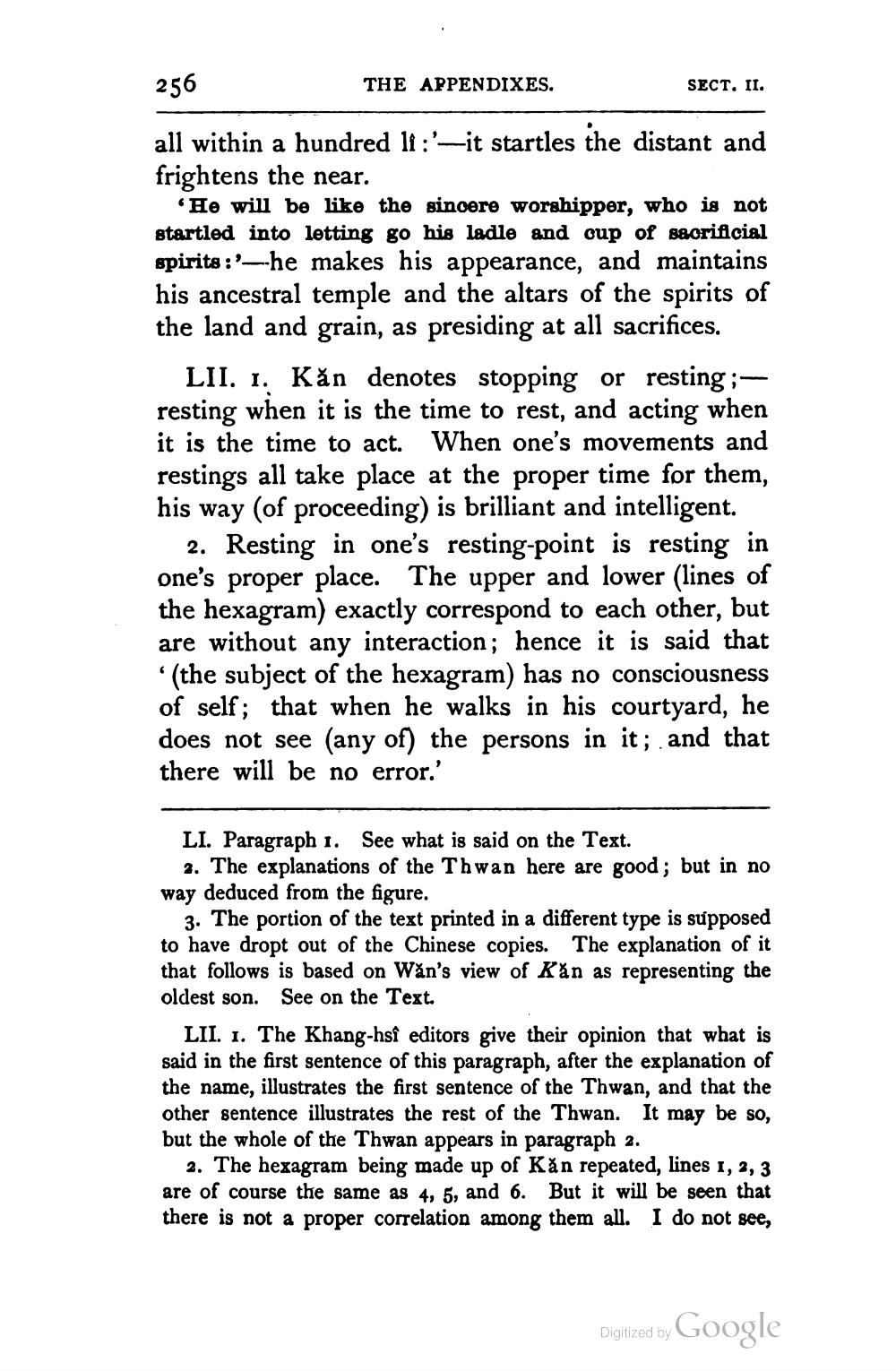________________
256
all within a hundred li:'-it startles the distant and frightens the near.
'He will be like the sincere worshipper, who is not startled into letting go his ladle and cup of sacrificial spirits: '--he makes his appearance, and maintains his ancestral temple and the altars of the spirits of the land and grain, as presiding at all sacrifices.
THE APPENDIXES.
SECT. II.
LII. 1. Kăn denotes stopping or resting;resting when it is the time to rest, and acting when it is the time to act. When one's movements and restings all take place at the proper time for them, his way (of proceeding) is brilliant and intelligent.
2. Resting in one's resting-point is resting in one's proper place. The upper and lower (lines of the hexagram) exactly correspond to each other, but are without any interaction; hence it is said that '(the subject of the hexagram) has no consciousness of self; that when he walks in his courtyard, he does not see (any of) the persons in it; and that there will be no error.'
LI. Paragraph 1. See what is said on the Text.
2. The explanations of the Thwan here are good; but in no way deduced from the figure.
3. The portion of the text printed in a different type is supposed to have dropt out of the Chinese copies. The explanation of it that follows is based on Wăn's view of Kǎn as representing the oldest son. See on the Text.
LII. 1. The Khang-hsf editors give their opinion that what is said in the first sentence of this paragraph, after the explanation of the name, illustrates the first sentence of the Thwan, and that the other sentence illustrates the rest of the Thwan. It may be so, but the whole of the Thwan appears in paragraph 2.
2. The hexagram being made up of Kăn repeated, lines 1, 2, 3 are of course the same as 4, 5, and 6. But it will be seen that there is not a proper correlation among them all. I do not see,
Digitized by
Google




